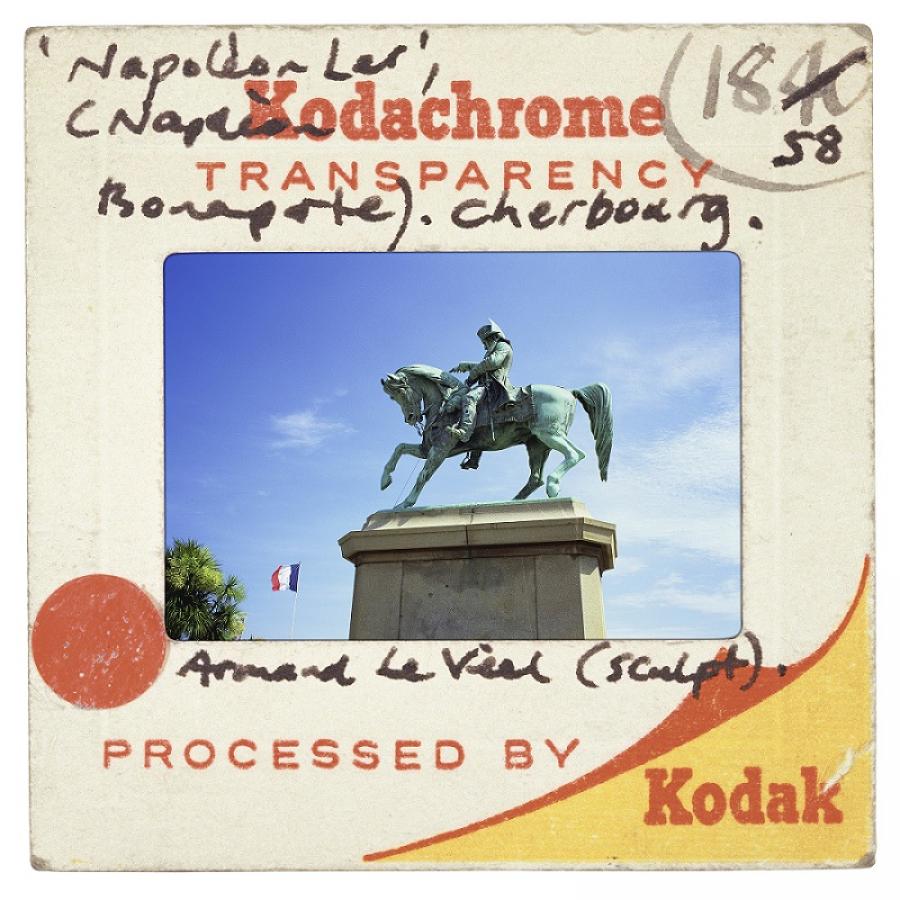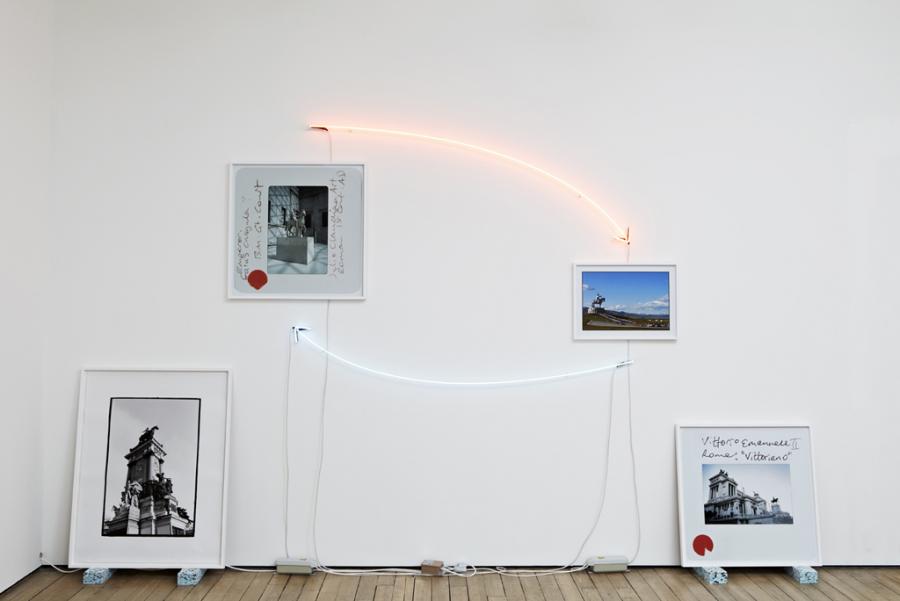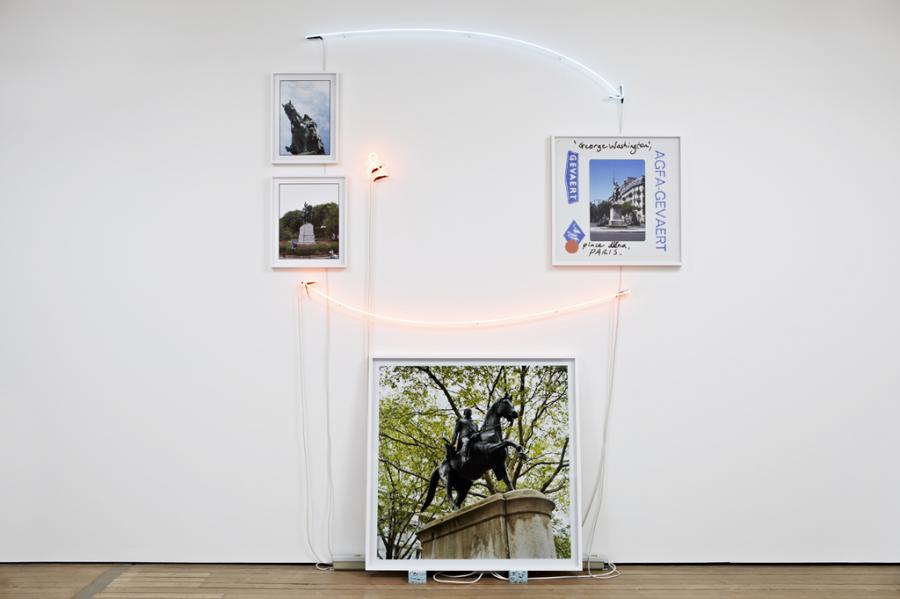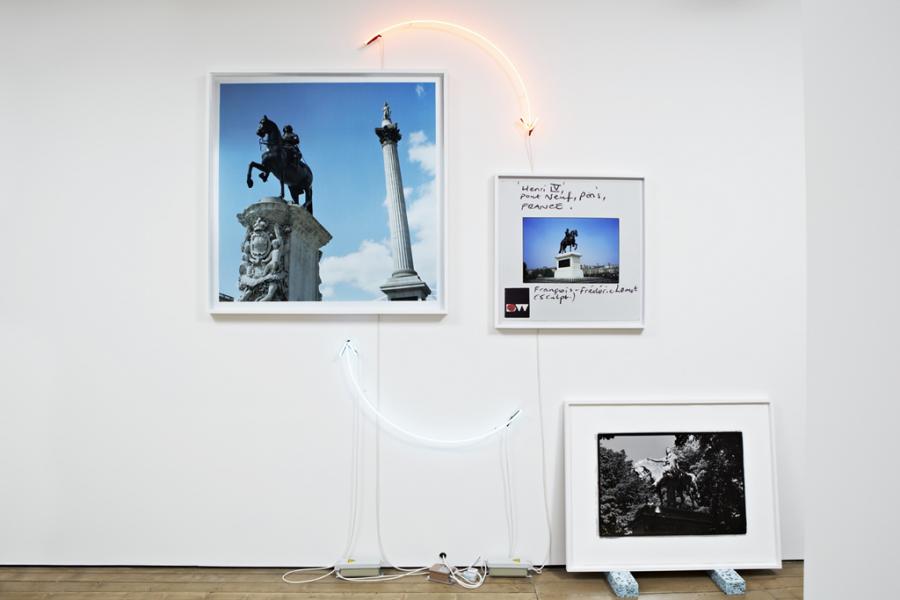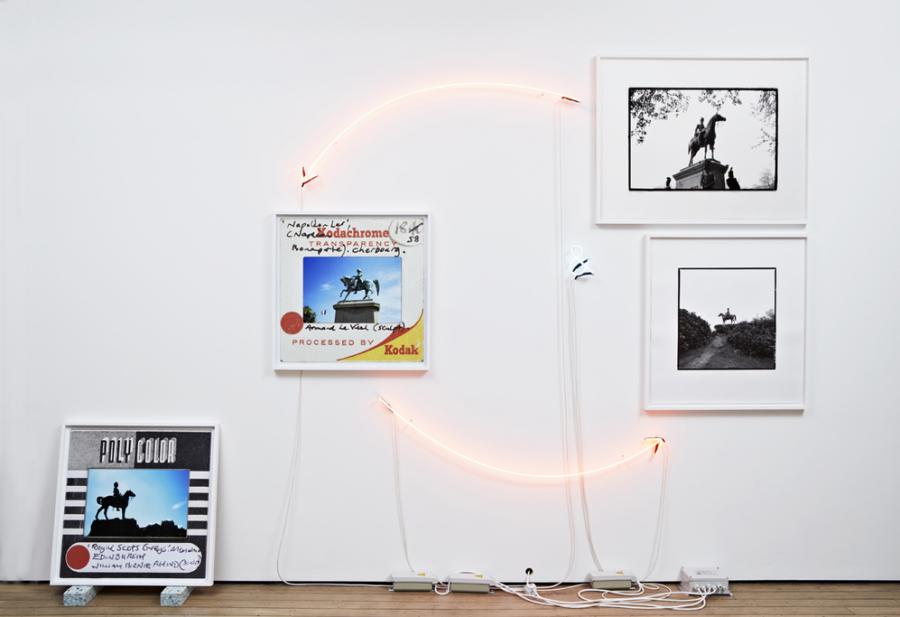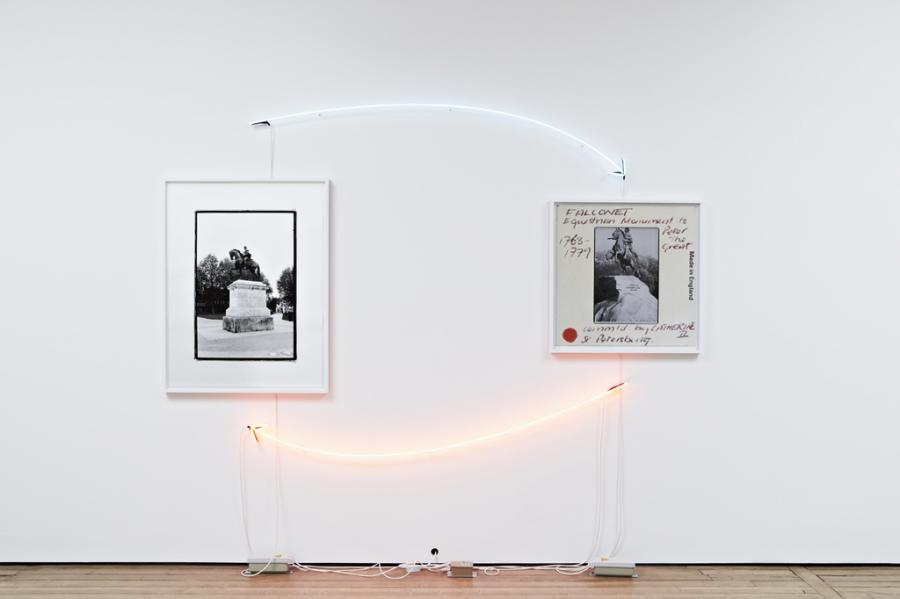Simon Patterson. Under cartel
January 24 / April 28 2013“UnderCartel” shows a series of photographs of equestrian statues from around the world. Each statue is shown paired with another in a relation that suggests their being bartered and exchanged. The idea comes from the historical term ‘under cartel’ which was a written or verbal protocol regarding the status of exchanged prisoners of war or hostages.
Rather than people, Patterson’s proposal is for a potentially endless international programme for the transfer of equestrian statues from state to state, public square to public square. We are offered, for example, the statue of Joan of Arc from the Place des Pyramides in Paris being swapped with that of El Cid in Burgos in Spain, or George IV in Trafalgar Square with that of Napoleon Bonaparte in Boulogne-sur-Mer. In each case, the proposed exchange is illustrated by flashing neon arrows that arc above and beneath the photographs to represent the journeys these sculptures would take to find their new homes. Below this assembly is an additional photograph of an equestrian statue.
Resting on foam blocks, as though about to be hung, it figures as a potential replacement if, say, Caligula was unavailable for transfer. The choice of equestrian statues as the vehicles for this cultural exchange infers their one-time role as signifiers of national self identification– from England we see the Duke of Wellington, Charles I and George III while America favours George Washington, and Mongolia Genghis Khan – but the recommendation that they be swapped calls into question what ideological, historical, political and cultural values these public monuments still carry. Given their ubiquity, the often unremarkable artistic quality of the sculpture and the contemporary dissociation, at least in the West, from a belief in a national figurehead, the question Patterson’s work asks is: would anyone notice?
Emphasizing the outmoded nature of equestrian sculptures, the photographs themselves are presented as relics of an earlier era. Many of them are shown on their original slide mount; with their distinct aesthetic and hand-written archival information detailing the figure, sculptor, date and location of the statues, they represent a pre-digital form of historical documentation.
Under Cartel appears to make light of the like-for-like swap of cultural artefacts but the fanciful exchange of William III for Peter the Great raises questions about the nature of contemporary global politics, the extent to which the notion of a ‘gentlemen’s agreement’ between countries could still exist and the status of public sculpture as a barometer of a nation’s cultural, ideological, economic and militaristic health.


